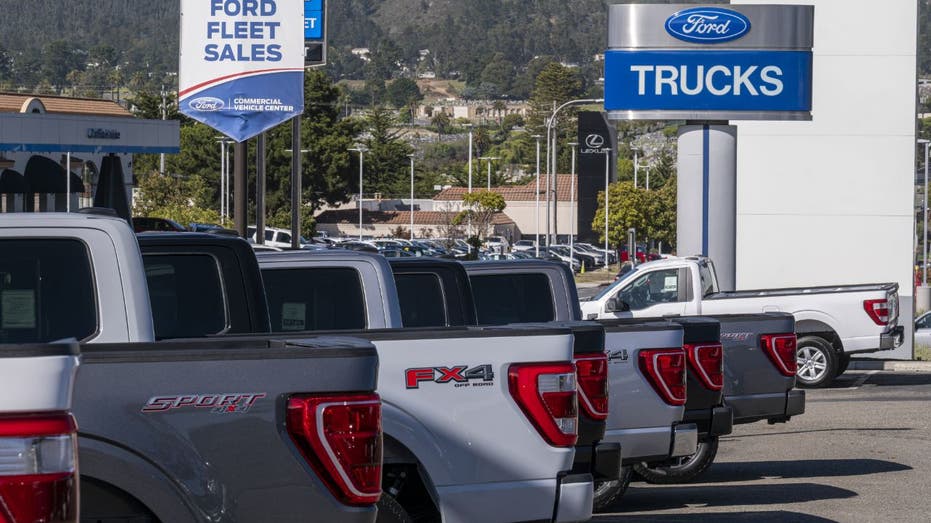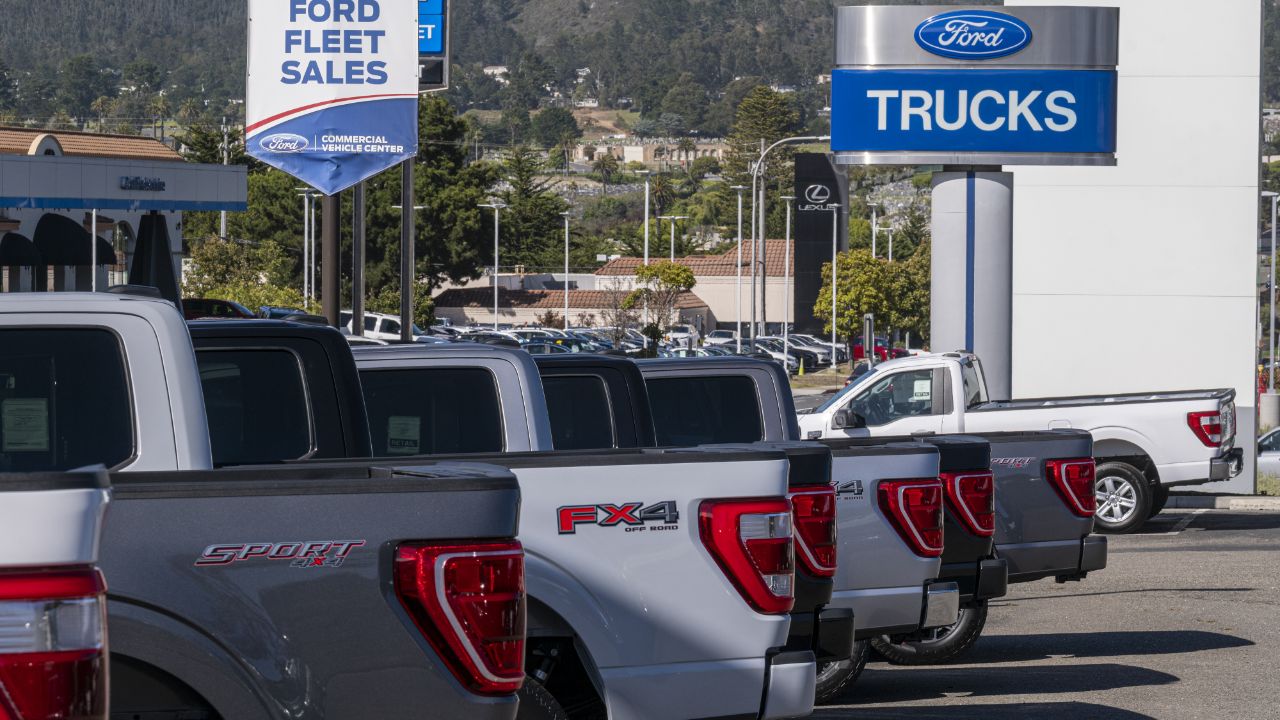The UAW strike might be over, but will consumers feel it later?
Increased labor costs incurred by Ford, GM and Stellantis could be reflected in car prices down the road
Al Root on UAW: Inevitable that a strike was going to happen
Barrons senior writer Al Root discusses the United Auto Workers strike as the union plans to unionize other automakers.
The United Auto Workers' six-week strike against Ford, General Motors and Stellantis could be over now that the union has reached tentative deals with each of Detroit's Big Three, but the new labor costs incurred by automakers in the fresh contract agreements may be felt by consumers down the road.
Although the strike was limited in its scope, the automakers felt it was due to the UAW shutting down several major assembly plants. The work stoppage cost the industry billions of dollars, and the Big Three all ratified record contracts with the union in order to get production lines running again.

A "UAW On Strike" sign held on a picket line outside the General Motors Co. Spring Hill Manufacturing plant in Spring Hill, Tennessee, on Oct. 30, 2023. (Kevin Wurm/Bloomberg via Getty Images / Getty Images)
Each of the major U.S. automakers agreed to increase their union workers' pay by 25% over the life of the four-and-a-half-year contracts, along with cost-of-living adjustments that Consumer Reports says will push the employee pay hikes to 33% above current levels.
That is a steep increase in labor costs, but some experts say only time will tell whether the raises will amount to higher vehicle prices in the future. Others say vehicle price hikes are inevitable.
AS UAW STRIKE NEARS SETTLEMENT, LET'S HOPE THIS ONE DEMAND ISN'T MET
Data from auto inventory and information tracking firm Edmunds indicates the strike was not long enough to impact vehicle prices in any particular direction in the short term, but a spokesperson told FOX Business the firm's experts say it is too early to tell how added labor costs might affect prices in the long term.

Workers put engines on the frame of Ford Motor Co. fuel-powered F-150 trucks under production at their Truck Plant in Dearborn, Michigan, on Sept. 20, 2022. (JEFF KOWALSKY/AFP via Getty Images / Getty Images)
Ford withdrew its full-year forecast last week citing "uncertainty" over its tentative deal with the UAW, and CFO John Lawler told investors during the company's third-quarter earnings call that the new agreement will add another $850 to $900 in labor costs to each vehicle made.
Those increases will either be reflected in new vehicle price tags, absorbed by the company, result in automakers reducing costs in other ways, or some combination of the three.
CAR COMPANIES WOULD BE ‘SMART’ TO INVEST IN HYBRID VEHICLES: STEVE MOORE
"The concessions the automakers have made are already being positioned as significant by the automakers themselves, which is setting the stage for those costs to be passed through to consumers," Alain Nana-Sinkam, co-founder of industry tracking firm Remarkit Automotive, told CR. "However, given that consumers are already pretty well tapped out in terms of vehicle affordability, I’m not sure how much of that is going to end up sticking."
Cox Automotive chief economist Jonathan Smoke said in a statement earlier this week that the new UAW contract will have both positive and negative impacts on the economy.

Ford F-150 pickup trucks at a dealership in Colma, California, on July 22, 2022. (David Paul Morris/Bloomberg via Getty Images / Getty Images)
"Union contracts with cost-of-living adjustments contributed to the wage-inflation spiral the economy experienced in the 1970s. And wage gains at UAW plants could increase labor costs in factory towns, as all industries compete for workers," Smoke wrote. "The higher labor costs will also contribute to ongoing inflation in vehicle prices."
GET FOX BUSINESS ON THE GO BY CLICKING HERE
He added, "Consumers will bear some of the cost burden over time but given that affordability is already a challenge for the market, the automakers will not have an easy time passing along all of the costs to buyers and will have to seek efficiencies in other ways, or further limit production to more expensive vehicles that can absorb higher labor costs."





















